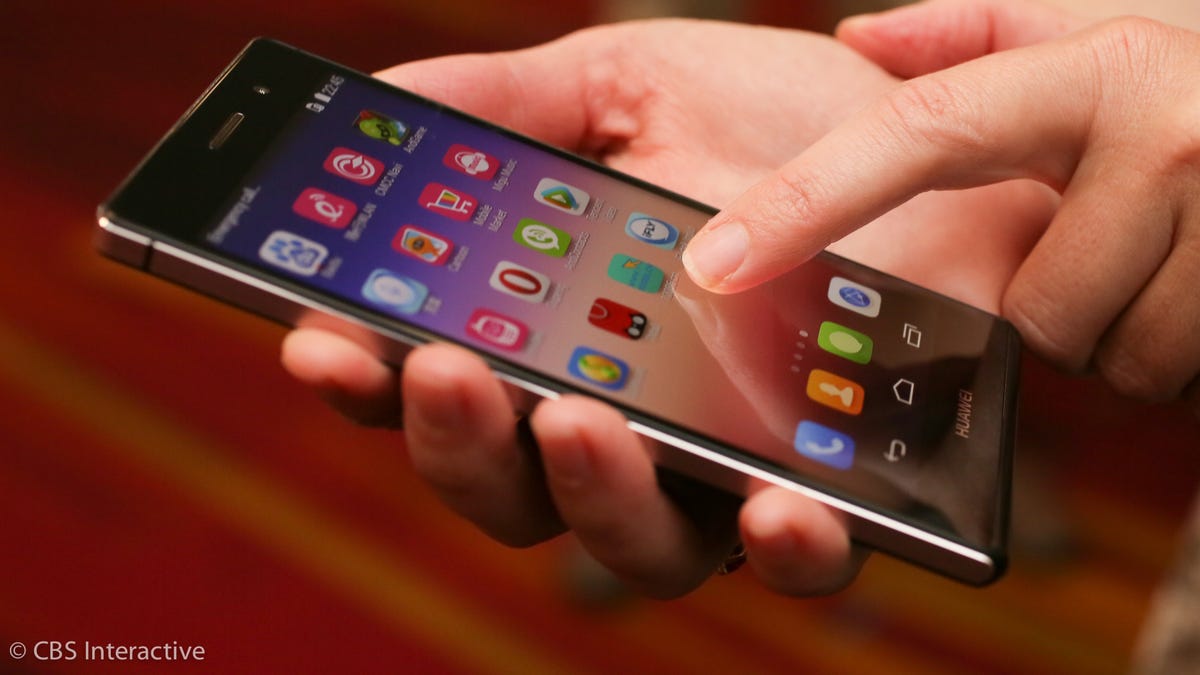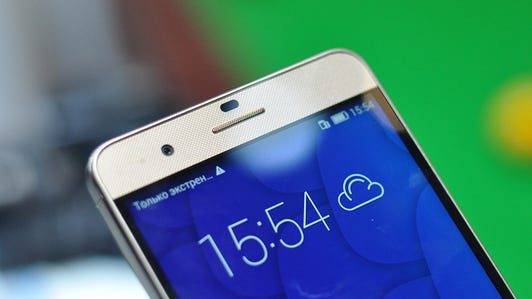
Sarah Tew/CNET
2015 is shaping up to be a big year for Huawei.
According to Bill Plummer, vice president of Huawei’s external communications, the Chinese device-maker’s sales numbers are the highest they’ve been in Huawei’s almost 30-year history, and leadership has grand ambitions. Huawei is doubling down on high-end phones to rival Apple and Samsung and is planning to launch a new wearable this year (that’s all we know on that).
We sat down with Plummer for a glimpse of where Huawei stands.
On the high-end warpath
Huawei announced in January that it will shift focus to create more premium smartphones at a time when other companies are trying to make cheaper handsets for emerging markets. A recent report by research firm Canalys notes that India, for one, is experiencing growth at a rate of 90 percent per year. Clearly, emerging markets are big business.
Related stories
- Huawei’s new focus on high-end phones is a good idea, but won’t be easy
- Huawei shifts sights to high-end smartphones
- Huawei smartphone revenue jumps, reports say
- 5G is on the cards for Huawei and partnered South Korean service providers
So, why move away from the low-end and midmarket when huge competitors like Apple and Samsung still dominate the top tier?
“Others are shifting their attention to emerging markets,” Plummer said. “We’ve been there.”
Plummer further noted that Huawei has spent the last several years steadily building up its portfolio of phones from the low end to the high end, culminating in handsets like the Huawei Honor 6 Plus and Huawei Ascend P7 , the latter of which has a version that Huawei made with an expensive and rarely seen sapphire screen.
“The market is ripe for competition,” Plummer added. “The size of the pie is going to continue to grow.”
Making money, selling phones
Huawei’s slice of the pie has certainly grown this year, anyway.
The company shipped 75 million smartphones in 2014 (out of 138 million in total devices in all), contributing to a $12.2 billion revenue, Huawei announced in a press release. This represents a 30 percent jump in revenue year-over-year and is the first time that Huawei has broken through the $10 billion revenue barrier as well.
Huawei’s new Honor 6 Plus features dual cameras (pictures)






Compare these numbers to Huawei’s haul from just a few years back. In 2010, the company had sold only 3 million handsets, Plummer said, concentrating its business on its networking equipment instead. In fact, that divisions still earns the lion’s share of Huawei’s income, though Plummer says that the mobile devices unit is entirely self-sustaining.
By 2015, Huawei says it hopes to sell 100 million smartphones, contributing to $15 billion in device sales overall.
To prove Huawei’s commitment in the devices it sells on the networks it helps to build, the company has already invested $600 million into developing 5G technologies.
A simpler image
Huawei’s biggest challenge, as it has been for years, is to become better known. Right now its brand is strongest in Europe and Asia, but the company has also struggled to gain in mature markets like the US.


Huawei
Part of the problem, Plummer said, is that the brand name is hard for some to say and spell. How can potential customers find their phones if they don’t know how to spell “Huawei” into the search field? In 2012, Huawei even ran a television campaign, “How to pronounce Huawei,” to help make the brand more recognizable.
To that end, some high-end phones are getting marketing treatment that emphasizes a subbrand, Honor by Huawei, which the company is hoping will appeal to English-speaking tongues. Plummer says that high-end devices will also prominently carry the Huawei name, but that Honor devices tend to be “more targeted at younger techies that may, in some cases, be a bit more price sensitive.”
Not so easy
While Huawei’s 30 percent sales jump is a huge indicator of its success in 2014, keeping that momentum going is no easy matter.
As my colleague Aloysius Low points out, Huawei could struggle in the price wars against low-cost makers like Xiaomi and OnePlus and run into a squeeze on the high end compared to dominant players like Apple and Samsung. (To wit, the number of iPhones sold by Apple in this last quarter — 75 million — equaled the quantity of devices Huawei sold in all of 2014.)
Will Huawei’s promise to get more high-end phones in customers’ hands play out as promised? We’ll certainly keep our eye on Huawei’s development, starting with Mobile World Congress in March. A high-end phone launched at its March 1 press conference there could really set the tone.
Article updated at 2:30pm PT to clarify Huawei’s sales categories (sales of smartphones versus total device sales).



